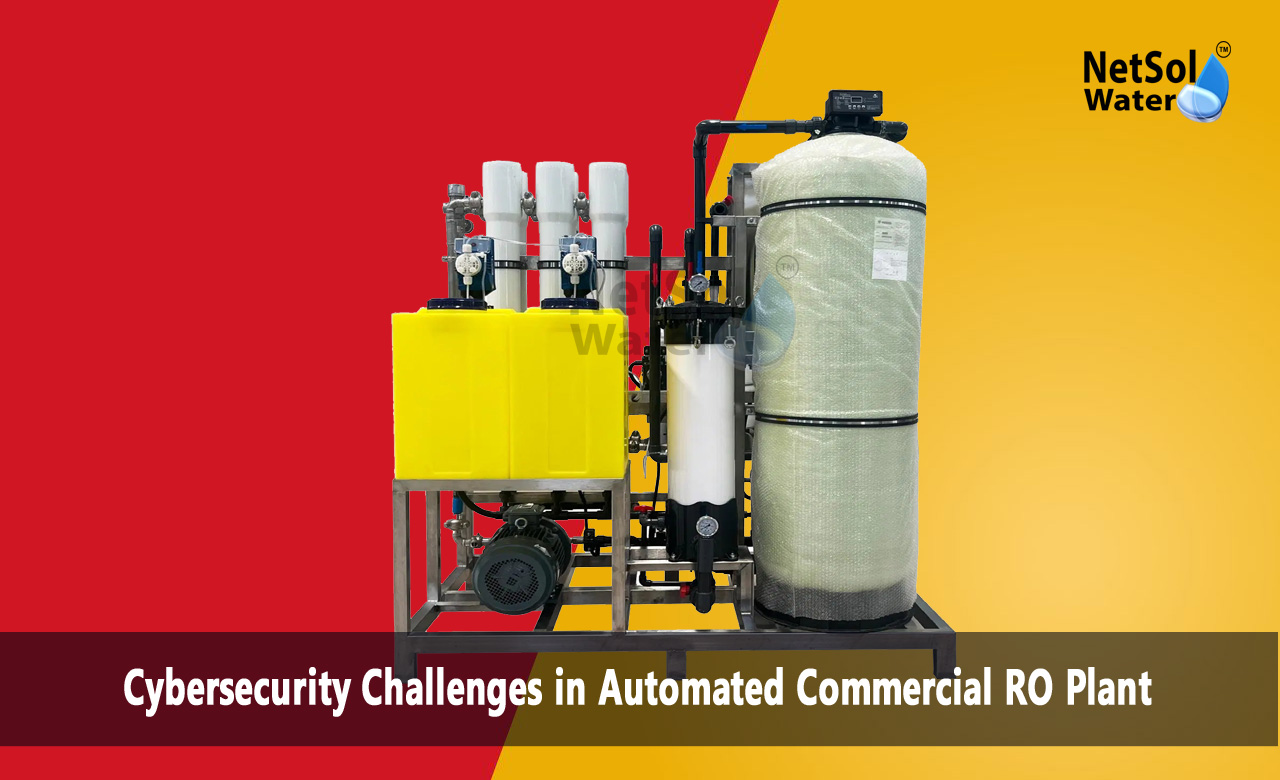Cybersecurity Challenges in Automated Commercial RO Plant
In an era where water scarcity is a growing concern, Automated Commercial RO plants are crucial for securing water. These systems are important for purifying water used in commercial and industrial settings. However, as these plants become more automated and connected, they encounter various cybersecurity challenges that can affect their efficiency and reliability. We examine the complex network of cybersecurity risks associated with automated commercial RO plants and discuss strategies to effectively reduce them.
Understanding Automated Commercial RO Plants
Automated Commercial RO plants utilize advanced technology to purify water through the process of reverse osmosis. These systems consist of intricate networks of sensors, pumps, valves, and controllers that work in tandem to remove contaminants and produce clean, potable water. They are deployed in various commercial settings, including manufacturing facilities, pharmaceutical industries, beverage production units, and more. The reliance on automation not only enhances efficiency but also introduces vulnerabilities that can be exploited by cyber threats.
Cybersecurity Risks in Automated Commercial RO Plants
Unauthorized Access: One of the primary concerns is unauthorized access to the control systems of RO plants. Malicious actors may exploit vulnerabilities in network security protocols to gain unauthorized entry, potentially tampering with water purification processes or causing system malfunctions.
Data Breaches: Commercial RO plants store sensitive operational data, including water quality metrics, system performance logs, and maintenance schedules. A data breach could compromise this information, leading to operational disruptions, regulatory non-compliance, and reputational damage.
Malware and Ransomware Attacks: Malicious software, such as malware and ransomware, pose significant threats to automated RO plants. These attacks can disrupt plant operations, manipulate control systems, or even encrypt critical data, demanding ransom payments for decryption.
Insider Threats: Employees or contractors with access to the RO plant systems may inadvertently or intentionally compromise cybersecurity. Whether through negligence, malicious intent, or coercion, insider threats represent a significant challenge in safeguarding automated commercial RO plants.
Supply Chain Vulnerabilities: The supply chain for automated RO plant components spans across multiple vendors and manufacturers. Any compromise within this chain, such as the insertion of counterfeit or compromised components, could compromise the security and integrity of the entire system.
Mitigating Cybersecurity Risks
Robust Network Segmentation: Implementing robust network segmentation isolates critical systems from external threats, limiting the potential impact of a cyber attack on automated RO plants.
Encryption and Authentication: Employing encryption protocols and multi-factor authentication mechanisms enhances the security of data transmission and access control, mitigating the risk of unauthorized access and data breaches.
Continuous Monitoring and Intrusion Detection: Deploying robust monitoring systems, including intrusion detection systems (IDS) and security information and event management (SIEM) tools, enables real-time detection and response to cyber threats.
Employee Training and Awareness: Educating employees about cybersecurity best practices and the potential consequences of cyber threats fosters a culture of vigilance and accountability within organizations operating automated commercial RO plants.
Vendor Risk Management: Implementing stringent vendor risk management practices ensures that suppliers adhere to cybersecurity standards and mitigate supply chain vulnerabilities effectively.
Incident Response Planning: Developing comprehensive incident response plans enables organizations to mitigate the impact of cyber-attacks on automated RO plants promptly. Regular drills and simulations help refine response strategies and ensure readiness in the event of a cybersecurity incident.
The Role of Regulation and Compliance
Regulatory frameworks play a crucial role in shaping cybersecurity practices within the water industry. Compliance with industry standards and regulations, such as the NIST Cybersecurity Framework and the International Organization for Standardization (ISO) standards, helps organizations establish a baseline for cybersecurity governance and risk management. Additionally, sector-specific regulations, such as the Safe Drinking Water Act (SDWA) in the United States, impose requirements for maintaining the integrity and security of water treatment systems, including automated commercial RO plants.
Conclusion
Automated Commercial RO plants are crucial for securing water in commercial and industrial uses. But relying more on automation means facing more cybersecurity risks. To protect these systems, organizations need strong cybersecurity measures like separating networks, using encryption, training employees, and following regulations. By doing this, they can reduce risks and keep automated Commercial RO plants working reliably. In a time when water security is so important, taking proactive steps to secure these systems is crucial for keeping water resources safe and sustainable.
Do you need an advice or assistance on selecting the best water and waste water treatment unit? We have solutions for all your problems!
Let us know your problem, our experts will make sure that it goes away.
For an assistance or related query,
Call on +91-965-060-8473 Or write us at enquiry@netsolwater.com



